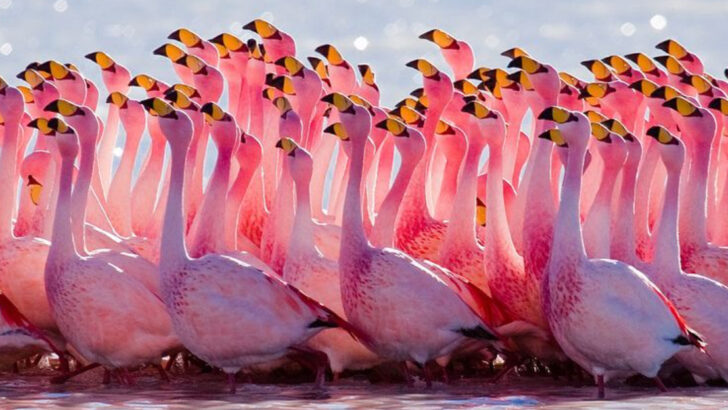Flamingos look like a fever dream—and act like one too.
These birds don’t just show up, they parade in. Legs like stilts, feathers dipped in bubblegum pink, and group choreography that could rival a pop concert. They’re not here to blend in. They were born to be weird, wonderful, and slightly chaotic.
They eat with their heads upside down.
And their color? It comes from snacks. No joke.
But behind that fabulous fashion statement is a creature built for survival in places most animals wouldn’t dare touch. Flamingos are the drama queens of the bird world—and the science behind them is even more bizarre than you’d expect.
Get ready to meet the bird that looks like a lawn ornament but lives like a legend.
Flamingos Are Filter Feeders
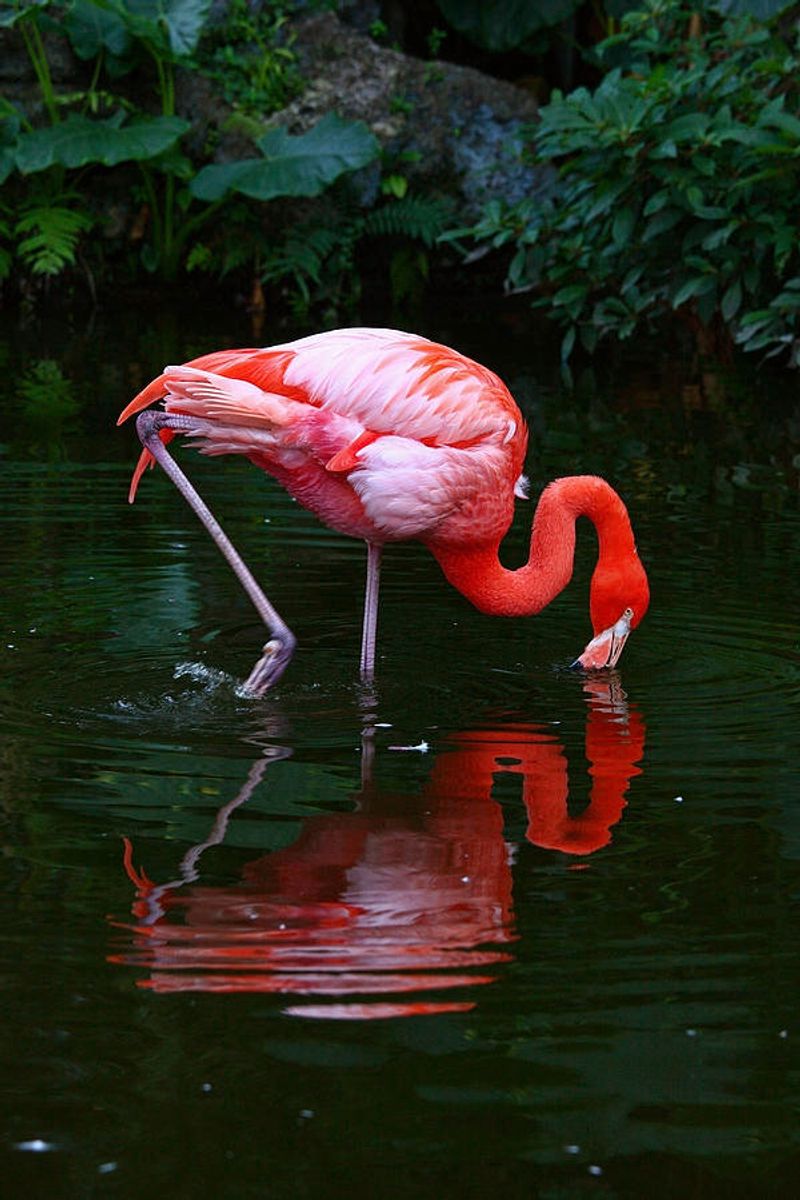
With their heads upside down in the water, flamingos filter tiny organisms to eat. Their unique beak structure allows them to sift through mud and water, extracting algae, crustaceans, and small fish. This feeding method is akin to how whales filter feed in the ocean. Interestingly, the pigments in the organisms they consume are what give flamingos their iconic pink hue. Without these pigments, flamingos would remain a dull gray. The process of filtering is both efficient and mesmerizing to observe.
Pink Plumage Comes From Diet
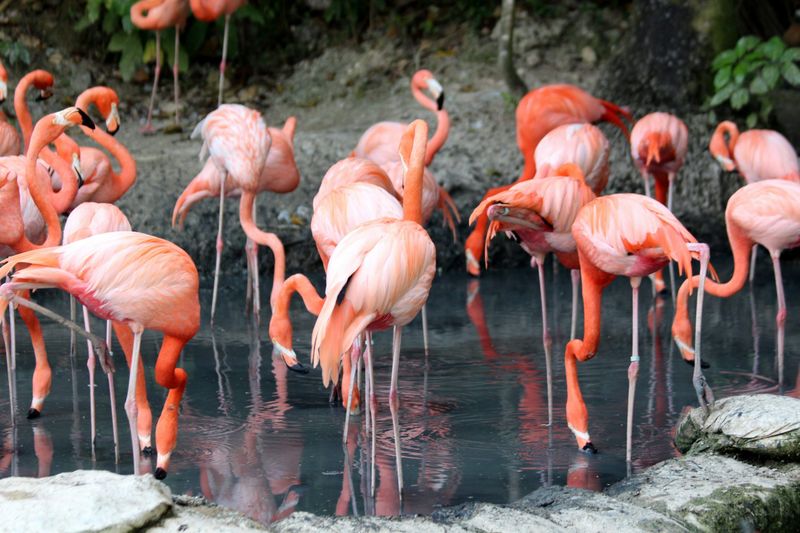
Flamingos owe their vibrant pink color to carotenoids found in their diet. These pigments, abundant in the crustaceans and algae they consume, are broken down in the liver and deposited in the feathers. The intensity of their color can vary based on diet and species. Some flamingos display a deeper red hue, while others are a lighter pink. This dietary influence on color showcases the direct relationship between nutrition and appearance in the animal kingdom.
Flamingos Can Stand on One Leg
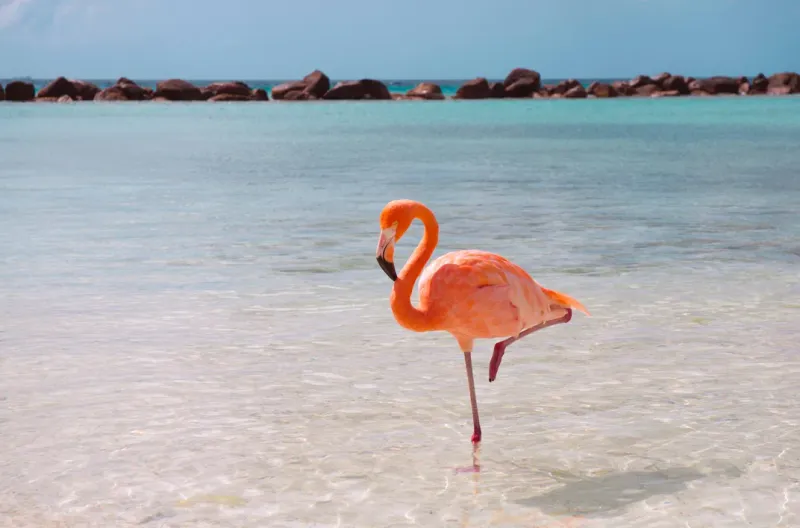
Flamingos often stand on one leg, a behavior that baffles many. This iconic pose is believed to help them conserve body heat while resting. By tucking one leg under their body, they minimize heat loss in cold water. This posture is so stable that flamingos can even sleep while standing on one leg. The precise mechanics of this behavior remain a subject of scientific curiosity, adding to the mystique of these elegant birds.
Social Creatures
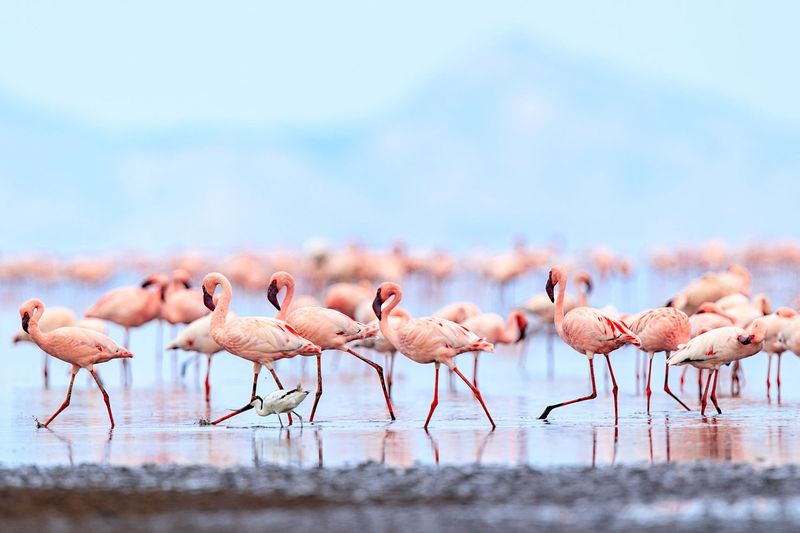
Flamingos are highly social birds, often found in large flocks numbering in the thousands. These gatherings serve multiple purposes, from protection against predators to increased foraging efficiency. Social interactions include synchronized movements and vocalizations that strengthen group cohesion. The communal aspect of their lives is fascinating, as they engage in collective displays and rituals. This social structure plays a crucial role in their survival and success as a species.
Flamingo Chicks Are Born Gray

At birth, flamingo chicks are a fluffy gray, a stark contrast to their colorful parents. As they grow, their diet gradually influences their feather color. The gray down provides camouflage, helping chicks blend into their surroundings. This initial coloration is an essential adaptation for their safety in the wild. Observing the transformation from gray chick to pink adult is a testament to the fascinating life cycle of flamingos.
Unique Mating Dances
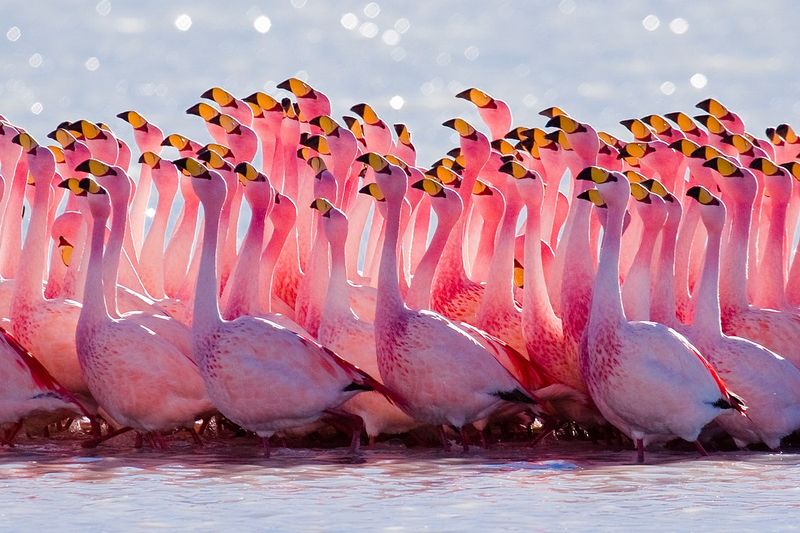
Flamingos engage in elaborate mating dances, a spectacle of synchronized movements and displays. These dances, involving head-flagging, wing-salutes, and marching, are crucial for pair bonding. The choreography varies between species, reflecting their diverse cultural expressions. These dances not only attract mates but also reinforce social bonds within the flock. The grace and precision of these rituals highlight the intricate social life of flamingos.
Mud Nests Construction
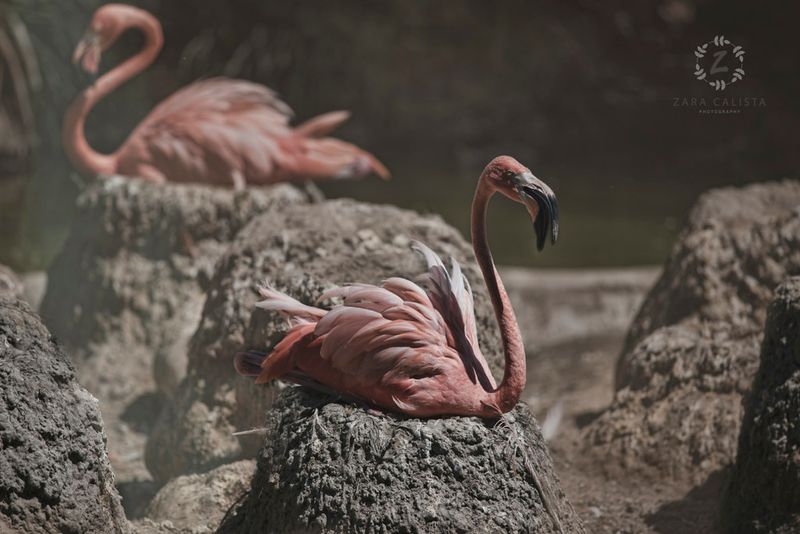
Flamingos construct nests from mud, creating a raised mound to protect their eggs from flooding and predators. This architectural feat is achieved using their beaks to gather and mold mud. The nests are typically built in colonies, forming impressive clusters. These structures provide a stable platform for laying and incubating eggs. Nest building is a communal activity, emphasizing the cooperative nature of flamingo society.
Flamingos Are Widely Distributed
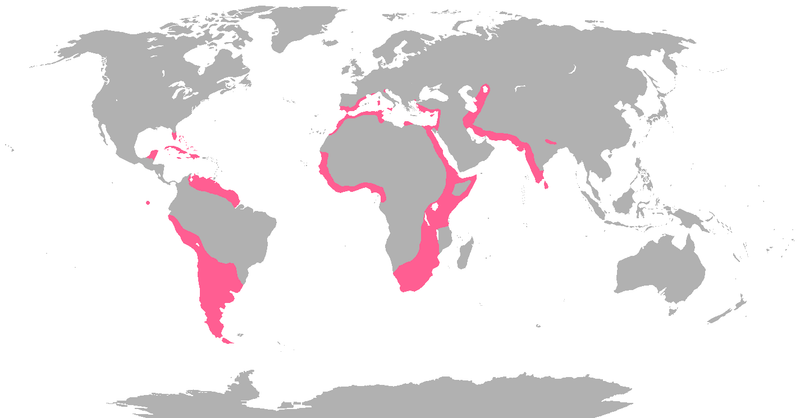
Flamingos are found across the globe, from the Americas to Africa, and even parts of Europe and Asia. Their habitats vary from salt flats and lagoons to lakes and estuaries. This wide distribution is a testament to their adaptability and resilience. Different species have evolved to thrive in distinct environments, showcasing their ecological diversity. The global presence of flamingos highlights their success as a species.
Flamingos Have a Long Lifespan
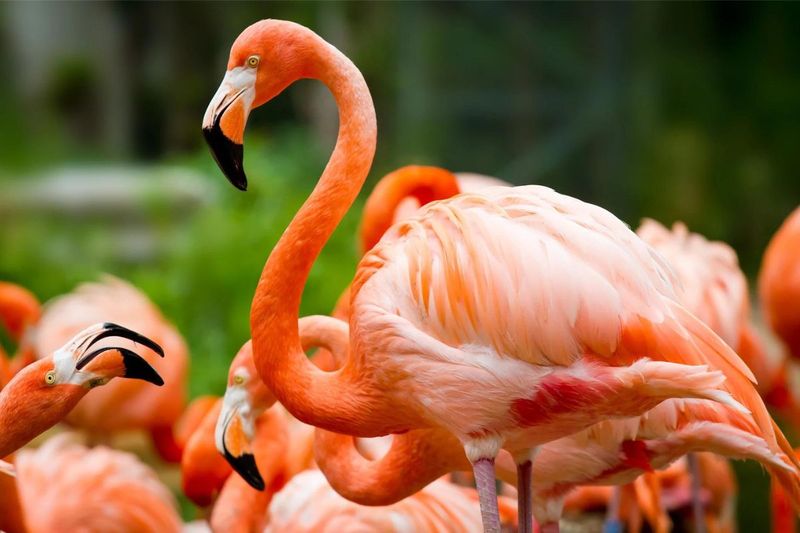
In the wild, flamingos can live for 20 to 30 years, with some individuals reaching up to 50 years in captivity. This impressive lifespan is supported by their robust social structure and adaptability. Older flamingos often have distinctive features, such as lighter or white feathers. Their longevity allows for the passing of knowledge and social traditions within flocks. This extended lifespan contributes to the stability and continuity of flamingo communities.
Flamingos Are Strong Fliers

Despite their awkward appearance on land, flamingos are powerful fliers. They travel long distances between feeding grounds and breeding sites, with some migrations spanning hundreds of kilometers. Their flight is characterized by steady wing beats and outstretched necks. Flamingos can reach speeds of up to 50 km/h in the air, showcasing their impressive aerial abilities. This aspect of their biology is often overlooked, yet it is vital for their survival.
Colorful Bird with a Colorless Egg
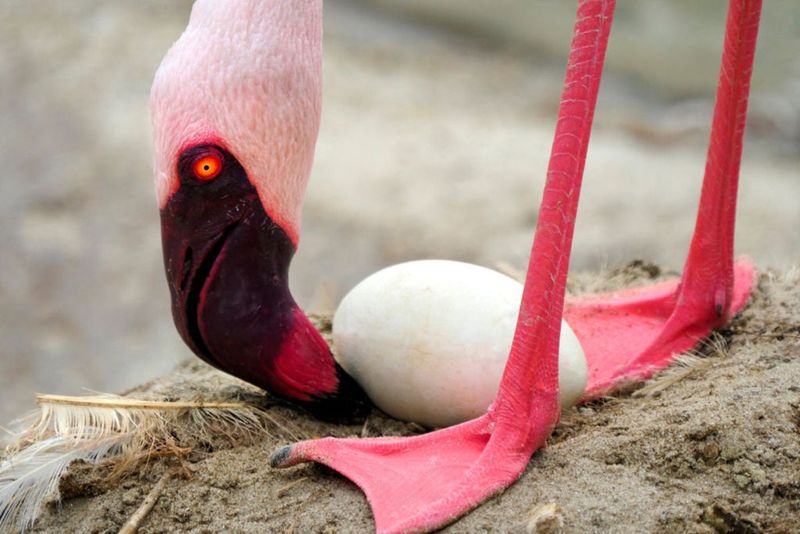
Flamingos lay eggs that are white and chalky, a stark contrast to their vibrant plumage. The eggs are oval-shaped and incubated on mud nests built by both parents. The colorless egg is an interesting anomaly, given the flamingo’s colorful appearance. This feature highlights the evolutionary quirks and adaptations of these birds. The incubation period lasts about 28 to 32 days, during which both parents take turns keeping the egg warm.
Adapted to Extreme Environments
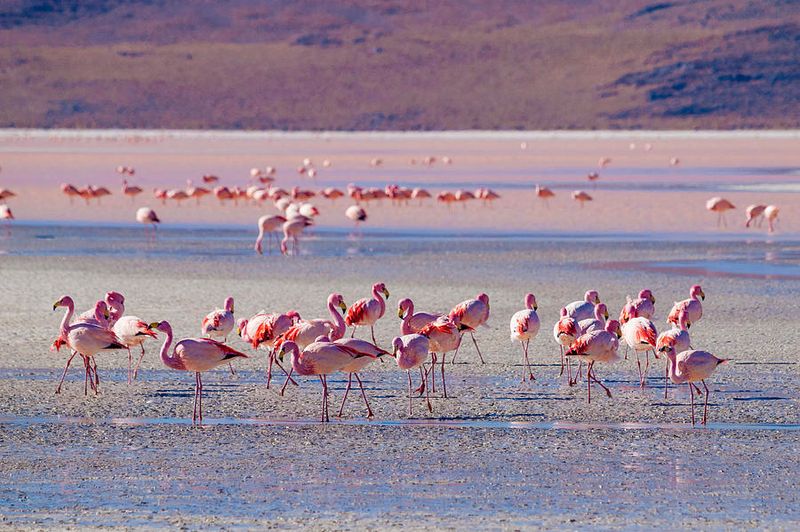
Flamingos are well-adapted to extreme environments, such as alkaline lakes and salt flats. Their specialized glands allow them to excrete excess salt from their bodies, enabling them to thrive in inhospitable areas. This adaptation is crucial for their survival, as it reduces competition for resources. Their presence in these harsh landscapes is a testament to their evolutionary ingenuity. Such adaptations underscore the resilience and versatility of flamingos.
Flamingo Tongues Have Spines
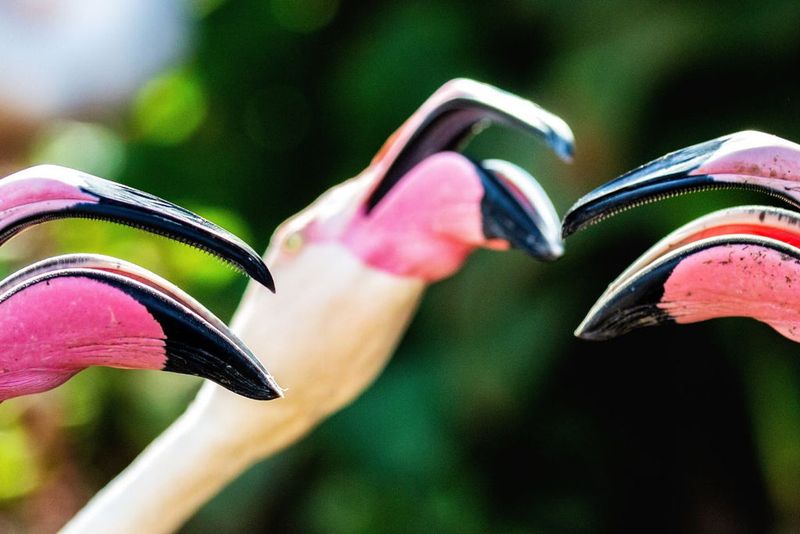
Inside a flamingo’s mouth lies an unexpected feature: spiny structures on their tongues. These spines aid in the filter-feeding process, helping trap food particles. This adaptation is unique and specialized, highlighting the complexity of their feeding mechanism. The tongue’s structure is an integral part of their diet, allowing flamingos to efficiently extract nutrients from their environment. This curious feature adds to the list of fascinating flamingo adaptations.
Flamingos Communicate with Loud Calls

Flamingos are known for their loud and distinctive calls, used for communication within flocks. These vocalizations serve various purposes, from establishing territory to coordinating group movements. Each species has its own unique set of calls, reflecting their social complexity. The cacophony of sounds in a flamingo colony is both intriguing and essential for maintaining social bonds. These calls are a pivotal aspect of their social interactions.
Flamingo Beaks Are Curved for Feeding
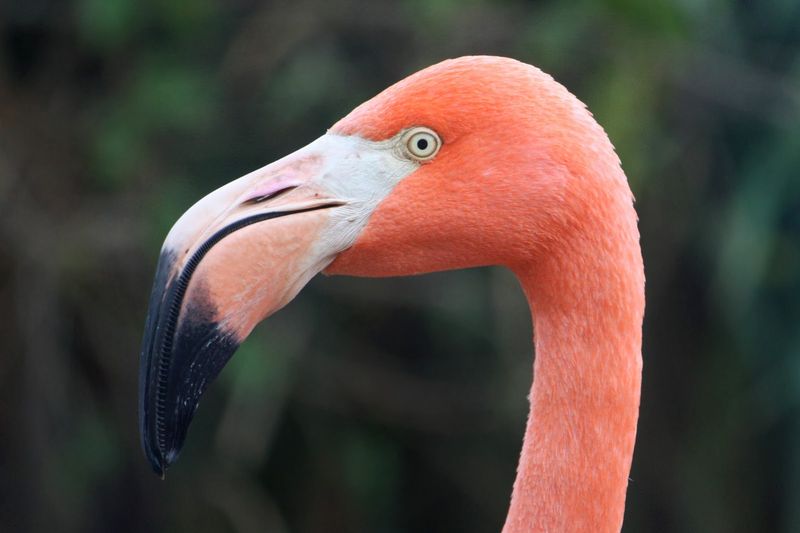
The curved beak of a flamingo is perfectly adapted for filter feeding. It functions like a sieve, allowing water to escape while retaining food particles. This specialized beak shape is an evolutionary marvel, designed for efficiency. The beak’s curve is specifically suited to their inverted feeding position, enabling them to thrive in their aquatic habitats. This adaptation is a striking example of form meeting function in the natural world.

